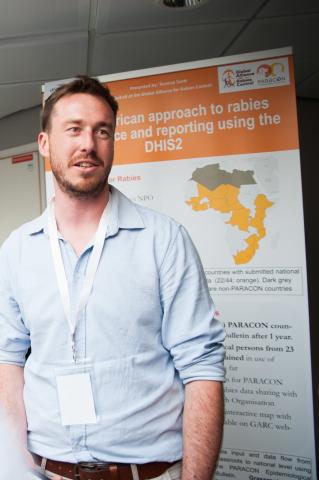New features and expert opinions for The Rabies Epidemiological Bulletin to expand the tool’s reporting capacity
Without adequate surveillance as a component of rabies control and elimination, it is difficult to determine the burden of the disease and, at later stages, to show freedom from rabies. This has resulted in a number of scientific publications (including Taylor and Nel’s “Global epidemiology of canine rabies : past , present , and future prospects” in 2015) referring to the cycle of neglect, whereby poor surveillance limits a country’s capabilities to control and eliminate rabies as well as hindering its ability to advocate support towards rabies control and elimination efforts.
Historically, few resources and tools were available for countries to improve their rabies surveillance, and the onus fell upon each country to develop their own surveillance and reporting system for rabies. However, in 2016, GARC –through the PARACON network –launched the Rabies Epidemiological Bulletin, a tool developed primarily to address the need for improved rabies reporting.
Aiming to replace the out-dated country reports previously submitted to the PARACON network, the Rabies Epidemiological Bulletin is an online, customisable data collection and analysis platform based on the DHIS2 system (a reporting system currently used extensively throughout Africa) that is designed to be used not only at a national level, but also at lower administrative levels within the country. Due to the successes of using this tool within the PARACON network, this Bulletin will be expanded to include other global networks, making this platform available to all countries that may want to use the tool.
All of this information is available in the public domain, but most people are not aware of what happens behind-the-scenes to ensure that the Rabies Epidemiological Bulletin continues to develop and improve with new features, interactive interfaces, and improved usability so that countries can collect more comprehensive and accurate data more easily. The Rabies Epidemiological Bulletin was launched in 2016, but the GARC team worked for more than seven months to build the initial system. After its development and initial implementation, countries provided feedback and requests for further improvements and features. This resulted in the need for GARC to work more closely with the DHIS2 developers, as well as the massive expert community working on software improvements, developments and implementation.
To address this, Terence Scott, a GARC team member, recently attended the DHIS2 Experts Academy held in Oslo, Norway from 14-18 August 2017 to present a poster on the unique use of the DHIS2 system for rabies surveillance. The majority of DHIS2 systems are used for human health surveillance, so coupling this platform with animal health surveillance was a novel approach. Furthermore, GARC worked closely with developers and other global international organisations to learn new functionalities, uses, programmes, system implementations, approaches and methods to improve the Rabies Epidemiological Bulletin. With this new-found knowledge and experience, the Rabies Epidemiological Bulletin will continue to improve so that data collection, analysis and dissemination will be easier for countries to participate in surveillance activities.
Furthermore, the collaboration between the WHO and GARC with regards to data reporting was strengthened at the experts’ academy to ease the reporting burden on countries by automatically sharing the relevant data between the Rabies Epidemiological Bulletin and the WHO Global Health Observatory. New features such as automated data sharing, new mapping features, scorecards, improved visuals and other enticing uses of the Bulletin can be requested and implemented for countries. If your country is interested in the use or further implementation of the Rabies Epidemiological Bulletin, please feel free to contact GARC for further discussions.
Submitted by Terence Scott, GARC and member of the Pan-African Rabies Control Network (PARACON) Steering Committee. For more information about the Rabies Epidemiological Bulletin, please refer to the publication “Addressing the Disconnect between the Estimated, Reported, and True Rabies Data: The Development of a Regional African Rabies Bulletin”.
